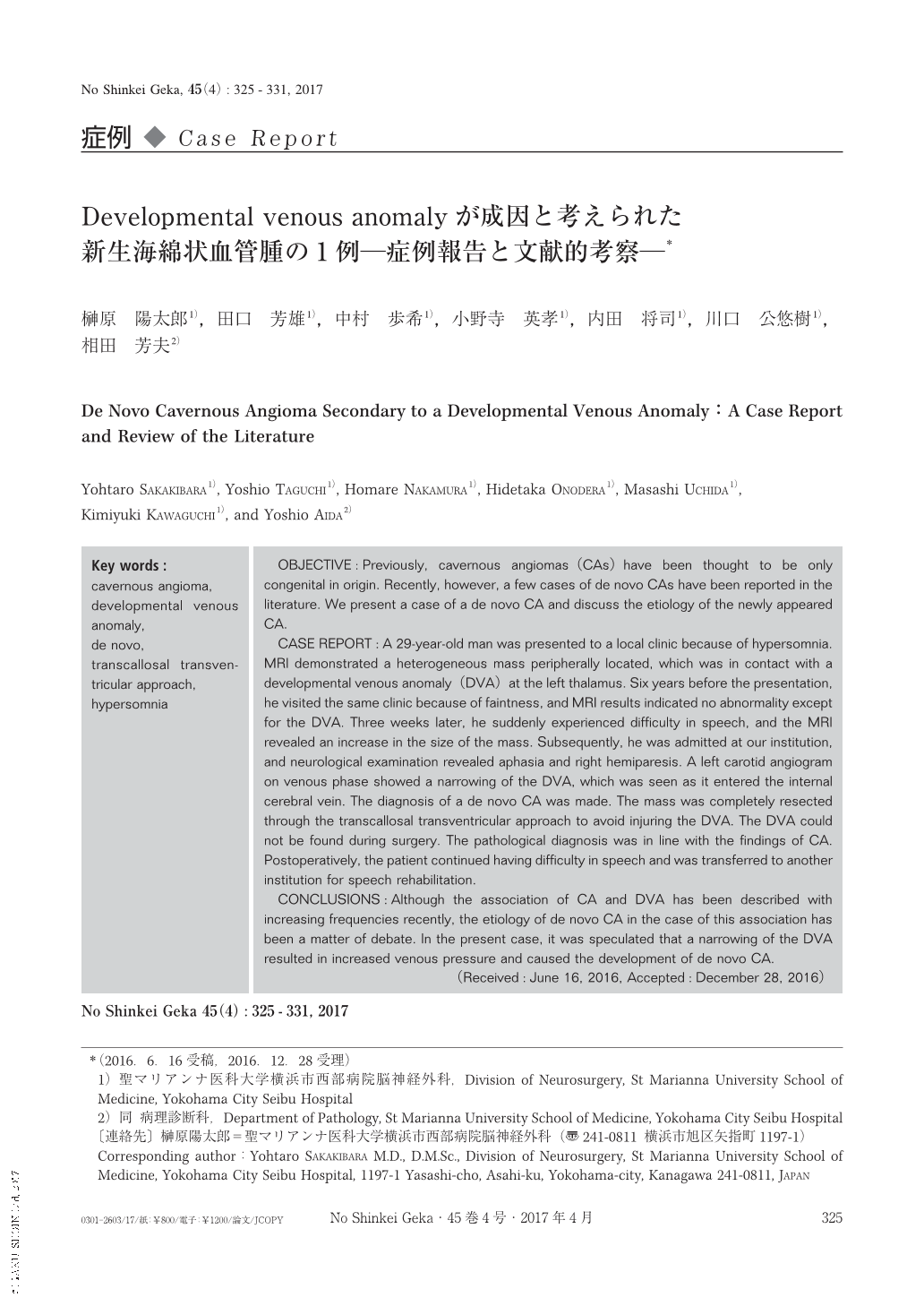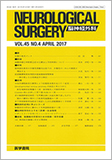Japanese
English
- 有料閲覧
- Abstract 文献概要
- 1ページ目 Look Inside
- 参考文献 Reference
Ⅰ.はじめに
新生海綿状血管腫(de novo cavernous angioma:de novo CA)は,撮像時期の異なるmagnetic resonance imaging(MRI)で,新規に検出されたCAと定義される4).CAは長く先天性疾患と考えられてきたが10),遺伝子異常6)や放射線治療7)などに伴う後発例の報告が散見される.
今回われわれは,6年前には描出されなかったde novo CAの1例を経験した.本例における発生機序を推測し,文献的考察を加え報告する.
OBJECTIVE:Previously, cavernous angiomas(CAs)have been thought to be only congenital in origin. Recently, however, a few cases of de novo CAs have been reported in the literature. We present a case of a de novo CA and discuss the etiology of the newly appeared CA.
CASE REPORT:A 29-year-old man was presented to a local clinic because of hypersomnia. MRI demonstrated a heterogeneous mass peripherally located, which was in contact with a developmental venous anomaly(DVA)at the left thalamus. Six years before the presentation, he visited the same clinic because of faintness, and MRI results indicated no abnormality except for the DVA. Three weeks later, he suddenly experienced difficulty in speech, and the MRI revealed an increase in the size of the mass. Subsequently, he was admitted at our institution, and neurological examination revealed aphasia and right hemiparesis. A left carotid angiogram on venous phase showed a narrowing of the DVA, which was seen as it entered the internal cerebral vein. The diagnosis of a de novo CA was made. The mass was completely resected through the transcallosal transventricular approach to avoid injuring the DVA. The DVA could not be found during surgery. The pathological diagnosis was in line with the findings of CA. Postoperatively, the patient continued having difficulty in speech and was transferred to another institution for speech rehabilitation.
CONCLUSIONS:Although the association of CA and DVA has been described with increasing frequencies recently, the etiology of de novo CA in the case of this association has been a matter of debate. In the present case, it was speculated that a narrowing of the DVA resulted in increased venous pressure and caused the development of de novo CA.

Copyright © 2017, Igaku-Shoin Ltd. All rights reserved.


